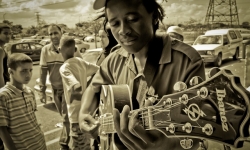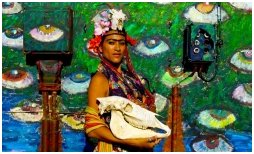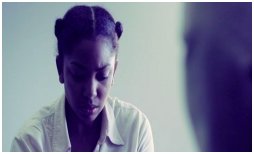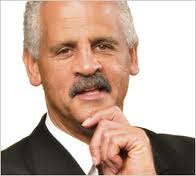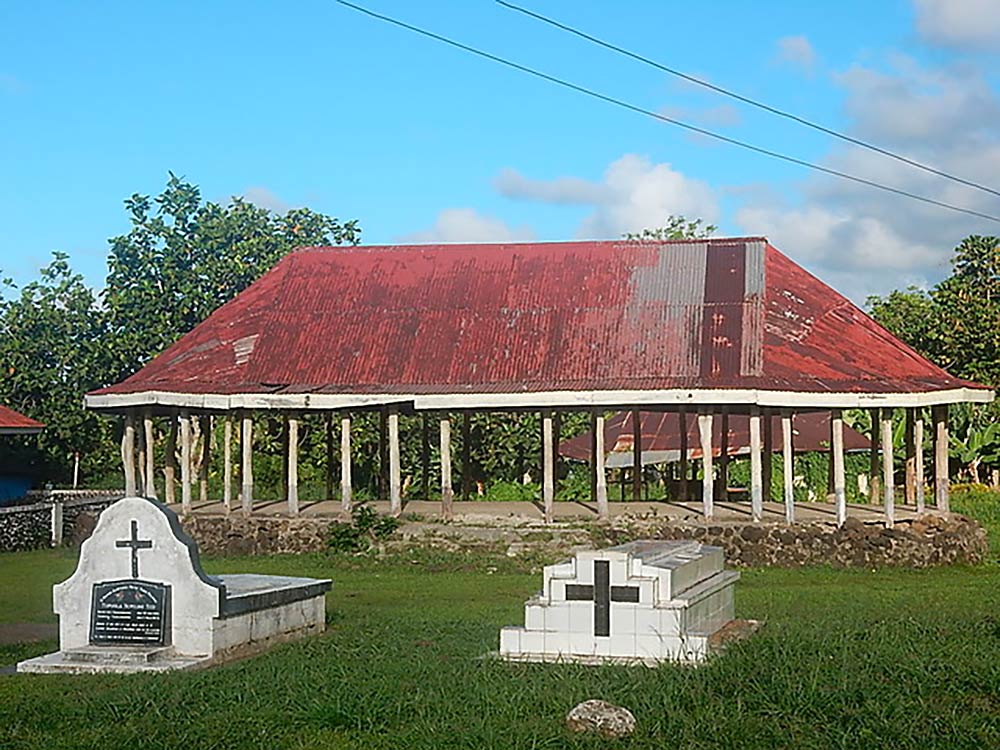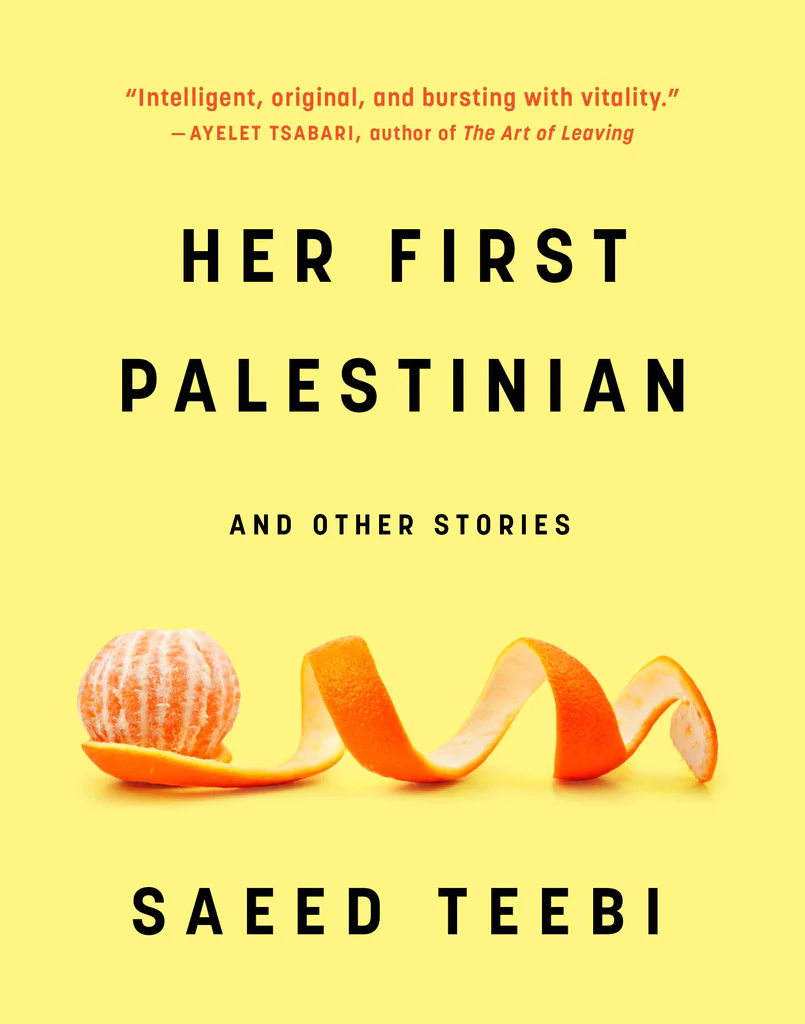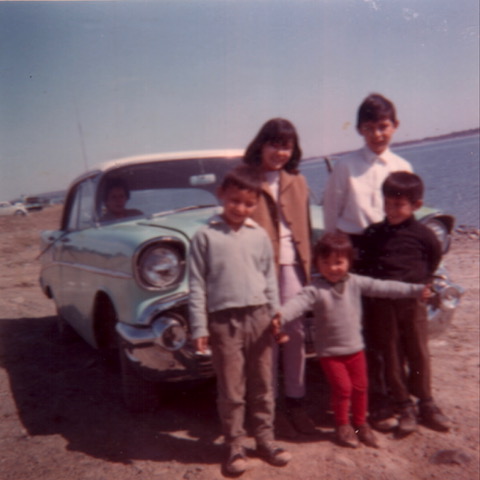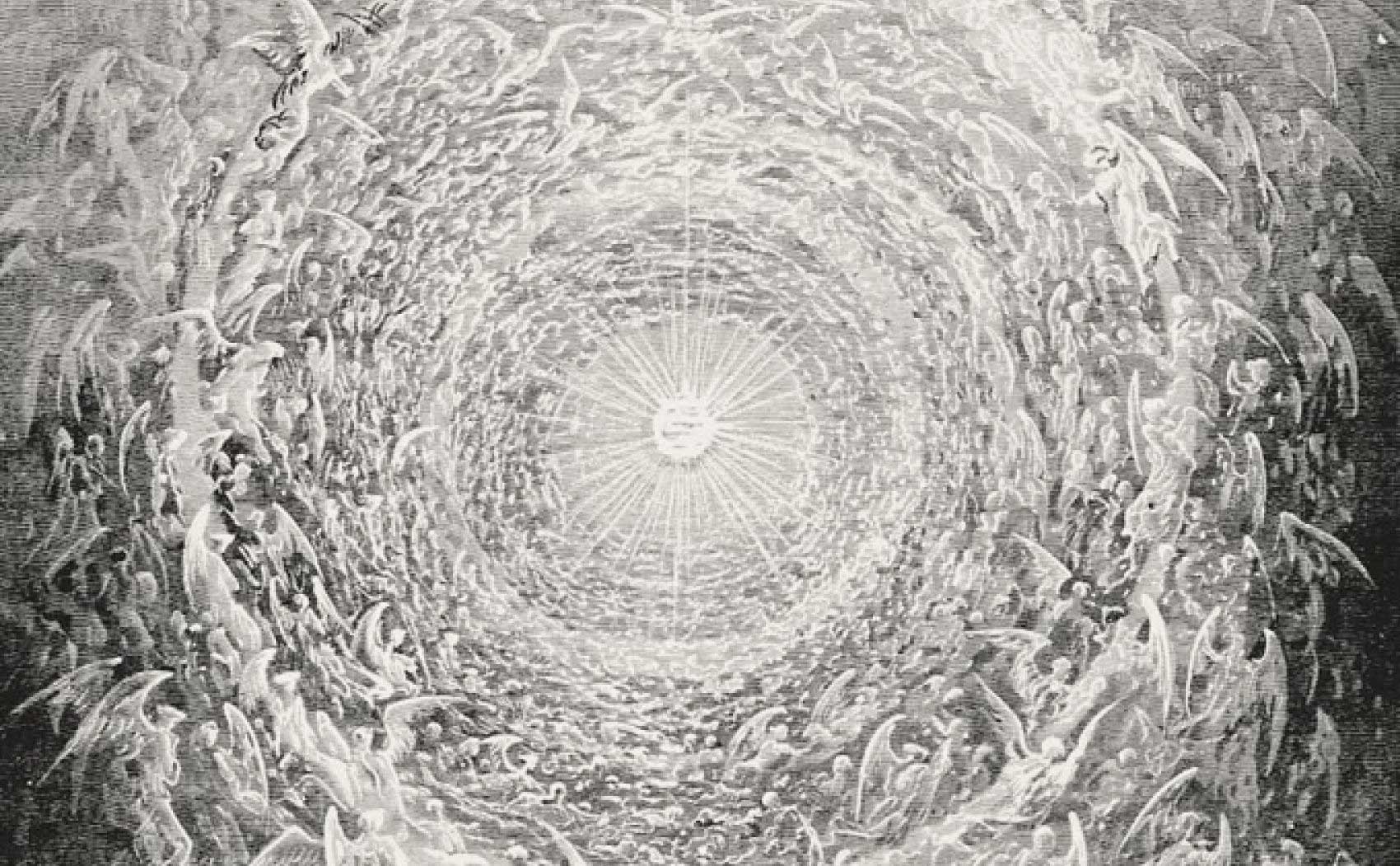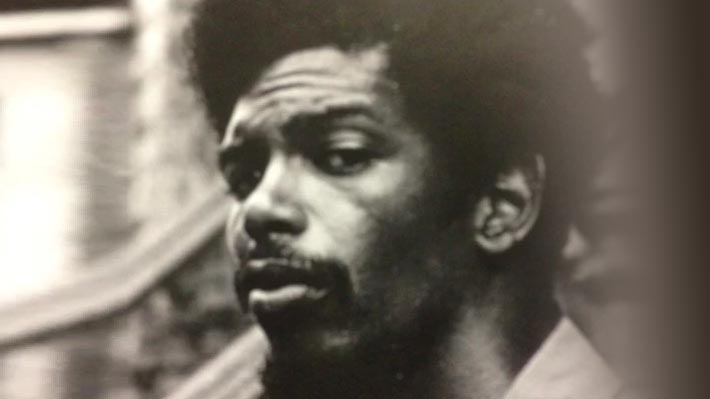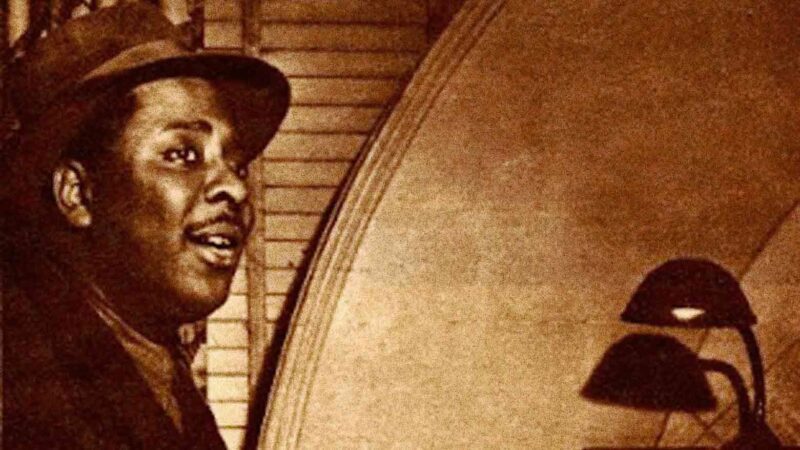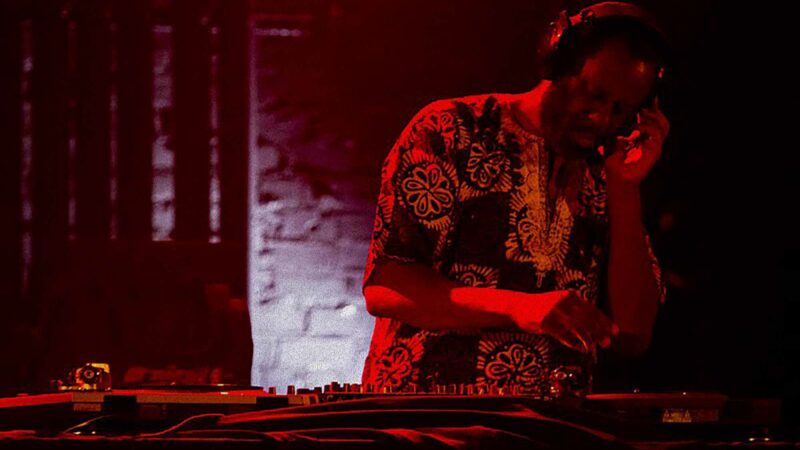The Creators, South Africa, 2011.
UPDATE: Awarded Honourable Mention for BEST DOCUMENTARY FEATURE
Maya Khankhoje
[This is the last film reviewed by Montreal Serai for the 8th International Montreal Black Film Festival which closed on September 30. Montreal Serai thanks the organizers for the privilege of covering this life-affirming event.]
A young woman named Laura Gamse, from Arlington, Va, receives a Fulbright scholarship to research a particular artist in South Africa. What she discovers is a country teeming with very creative young people, some of whom have traded guns for guitars as weapons for social change. So she stays there for two years filming them for The Creators, a remarkable documentary that is as uplifting as it is instructive.
The film opens with these lines:
If you are looking for Hell
Ask the artist where it is.
If you cannot find an artist
Then you are already in Hell.
Avigdor Pawnser (18th Century writer).
Doing a two-hour train commute from the townships to your job in Cape Town can certainly be hell, but tedium is obliterated when you start making music and the other passengers join you with their voices.
The names of these young artists are as varied as their musical styles: Warongx, Faith47, Mthetho, Emile, Plaq and Sweat.x. Some of them are b-boys who get to compete in Germany, others sing like untrained tenors (very rightly so, having learned to sing from a single Pavarotti CD left by a dead-beat father), yet others compose their own lyrics. What these young men and women share is the conviction that they will not work for the white man, but be their own persons, doing their own thing.
If you want to learn the history of apartheid or just have a nice time listening to great music, go see this film. Or better still, buy the CD and help these young people hone their musical skills. www.thecreatorsdocumentary.com (75% of the proceeds of the film will go to the local crews and artists to further their education.)
Montreal, 1 October 2012.
[Maya Khankhoje has warm memories of her visit to a pottery workshop and a traditional apothecary in one of the townships depicted in the film.]
****
Muhé Frida, Aruba, 2011.
Maya Khankhoje
The image of Frida Kahlo -who died 58 years ago- has steadily provided an ongoing source of income for made-in-China souvenir peddlers and T-shirt manufacturers. Most importantly, however, the painter -and the woman herself- has been a source of inspiration for generations of artists, feminists, writers and anybody interested in understanding how pain can be transmuted into art, if not joy. Muhé Frida belongs to the latter category. It is a multi-disciplinary representation of seven different alter-egos of Frida Kahlo: the creative woman, the erotic woman, the saintly woman, the sorrowful woman, the heroic woman, the macho woman and what else? Watch the film and find out. You might be surprised.
Written and directed by Felix de Rooy and performed by Alydia Wever in Papiamento and Spanish, this award-winning short film is a surreal tour de force. Frida’s art, born in the rich urban culture of Mexico City and visually inspired by the country’s tropics, has been painstakingly transformed by Alydia into a living organism that blends with the arid Aruban landscape. Alydia, singer, dancer, choreographer, actress and herself an art installation, is a woman to watch. Frida would have raised a glass of tequila in her honour.
Montreal, 30 September 2012.
[When Maya Khankhoje visited Aruba 20 years ago she dismissed it as a typical sun-and-surf tourist destination. After watching this film, she realized that true art can thrive even in the desert.]
****
Philia, South Africa/Mozambique, 2010.
Maya Khankhoje
A young South African woman dreams of studying art in Paris but sees her dreams shattered when she discovers somebody has fraudulently married her to get his own immigration papers. She confronts him to regain her freedom, he outsmarts her, she retaliates. Who will win? A short film about how survival needs trump bureaucracies. Smart actors for a smart movie.
Montreal, 28 September 2012.
****
Calypso Rose, France, 2011.
Maya Khankhoje
Harry Belafonte was dubbed the King of Calypso for having introduced the world to this musical genre which originated in Trinidad and Tobago. However, Calypso Rose is the real McCoy. She was born in Trinidad, raised in Tobago and is the author/singer of more than 700 calypso songs. At 70 she is the undisputed “Calypso Monarch”, a title she actually won as the first woman to be allowed to participate in a calypso contest. In fact, the organizers had to change the name of the competition from “Calypso King” to “Calypso Monarch” because they realized that women could certainly sing it and a woman like Calypso Rose did it better than anyone else. But her brand of calypso has nothing to do with the catchy tunes sung in Hollywood. It is more of a poetic form akin to rap documenting the travails and joys of the islanders.
Heart attacks and bouts with cancer have not stopped this indomitable woman from providing joy to her countrymen and the world at large. When very young she was raped by three men who traumatized her for life, which explains why she has never had a partner. In a way, she became a high-priestess of calypso. In fact, she is an ordained minister of the church, but her parishioners dress in bright yellow and orange robes and sing and dance with her with an abandon not normally seen in your run-of-the mill churches of the anglo world.
Montreal, 28 September 2012.
Stedman Graham meets the Montreal press.
Maya Khankhoje
N.B. The quotes below are not verbatim, but free paraphrases of Mr. Graham’s words.
Fabienne Colas, President and founder of MIBFF, introduced Stedman Graham to the press as best-selling author, educator and businessman. She wisely refrained from mentioning that he also happened to be Oprah Winfrey’s long-time companion, an identification tag often given to Mr. Graham by the media. Mr. Graham would agree with Madame Cola’s finesse. For Graham, a sense of self is more important than the labels given to us by others. In fact, he stated that what matters “is the image we have of ourselves because that is the image others will have of us.”
Mr. Graham certainly knows what he is talking about. The author of best-seller You Can Make it Happen: A Nice-Step Plan for Success , and motivational speaker specializing in identity development, leadership and diversity training, came to the festival to receive the 2012 Career Achievement Award in recognition for his entire career. His distinguished good-looks belied the wary expression in his eyes as he faced the T.V. cameras and local paparazzi. An intensely private man, Graham, it appears, suffered from low self-esteem during his youth and now devotes his life to empowering others
During the Q & A period, Mr. Graham said people have to go beyond a race-based identity. “I had a victim mentality, but I lacked process. I had to empower myself. We are all defined by external things. People put you in a box, the relationship box, the money box, labels that program you, that are socially constructed labels. So people get stuck doing nothing new. The educational system teaches us to memorize but not to take advantage of information for ourselves. We have to stop being followers and start being leaders. The process has to be reversed. We have to eliminate gender and class labels.”
Montreal Serai: “Mr. Graham, The United States has the largest per-capita population of incarcerated people in the world and the majority of them are Blacks or Latinos. Considering this, how can they do anything by themselves to get out of jails?”
Graham: “Interesting that you should ask this question. I started out as a guard, then a jail warden for five years working and developing basket-ball programs for the inmates. People in jail have two choices: to have love or hate; to be good or bad; to be negative or positive. It’s important to get folks to develop a sense of identity so that they can have a chance to turn their lives around when they leave jail. For that you have to use your hands, you have to transform your mind, you have to talk to others about your experiences. I believe that.”
Stedman Graham certainly believes in personal transformation. Harry Belafonte would agree with him, but might also remind us not to forget to see what the people in power are doing.
Montreal, 27 September 2012.
****

Still from Gros Dégats. Australia/Papua New Guinea, 2011.
Gros Dégats. Australia/Papua New Guinea, 2011.
Maya Khankhoje
Malaysian logging companies and corrupt politicians are the perpetrators of gross human injustices, great damage to the environment and other crimes including rape and harassment. The victims are the traditional inhabitants of the land and its historical owners who are tricked into signing off their rights in documents written in English, a language they do not master. Majestic old trees and wildlife habitat as well as traditional crops are also victims. Who buys the wood? Australians. Who gets the profits from the timber operations and the commissary stores in the base camp? Malaysian businessmen. This documentary could have been set anywhere in the world where natural resources are dwindling and people are forced into a slow death by deprivation, disease and displacement.
****

Still from Le Peuple de Bronze. Canada, 2011.
Le Peuple de Bronze. Canada, 2011.
Maya Khankhoje
We’ve heard of weapons turned into ploughshares. In this short documentary, set in Burkina Faso, artisans make whimsical figures out of spent bullet casings. A delightful idea!
****

Poster from Sing Your Song. USA, 2011.
Sing Your Song. USA, 2011.
Maya Khankhoje
Sing Your Song is a documentary of the life and times of Harry Belafonte, Afro-American singer, actor, civil rights activist and UNICEF goodwill ambassador. It is also an account of Belafonte’s career in Hollywood, a sampler of his musical styles and a case study of the detrimental effects of McCarthyism on the lives of individuals and the nation. Most importantly, this film traces the origins of the civil rights movement in the United States and its links with the anti-apartheid struggle in South Africa.
Harry Belafonte’s origins are similar to those of many people who have achieved great things in life. Poverty, hardship and discrimination can act as the whetstone that sharpens a person’s vision and determination. Belafonte was born in Harlem to a Jamaican single mother and a Martiniquan father who early on made a disappearing act. Belafonte spent his early childhood in Jamaica with his grandmother and then returned to the States to pursue his studies. He was bitten by the acting bug when a tenant in the building where he worked as an assistant janitor gave him two tickets to a show. He started singing in clubs to pay for his acting classes. The rest is history.
Belafonte was initially known as the Calypso King since he popularized the music that originated in Trinidad and Tobago, but he insists that he sang many genres throughout his life and the film is there to prove it. Belafonte was the first Black actor to act as a leading man with a white heroine but anybody who remembers his films will also remember that such romances were hinted at, never explicit. In fact, Belafonte got fed up with Hollywood’s racist policies and decided to start making independent films. One day he got a call from a man who identified himself as Martin Luther King, with a request to mobilize Hollywood to the cause of civil rights. Belafonte did just that.

Belafonte counts Nelson Mandela as a very close friend although he did not attend his inauguration in spite of the official invitation issued by Bill Clinton, because of his political differences with the latter. He also declined to participate in a homage to Martin Luther King in the presence of Coretta King because Bush would be present. Other actions deemed controversial by the American public include his visit to Fidel Castro in Cuba and to President Chavez in Venezuela. Not surprisingly they are not mentioned in the film.
In a post-screening talk addressing members of the Montreal Black community and Concordia University students, Belafonte enjoined the audience to fight against oppression. “What good is a conscience if it is not awakened” he reminded them.
Somebody from the audience asked Belafonte how he could identify himself as an American first and a Black man second. His reply was succinct: “I am a member of the human family.” He then reminded his public that the history of the United States started before the arrival of the Europeans on American soil.
In fact, Belafonte supported his good friend Marlon Brando when the latter refused to accept his Oscar as a protest against US government mistreatment of its native citizens.
Frank Sinatra will be remembered for doing it his way. Belafonte will be remembered for singing his song whose strong lyrics will reverberate for years to come. Watch this film if no other.
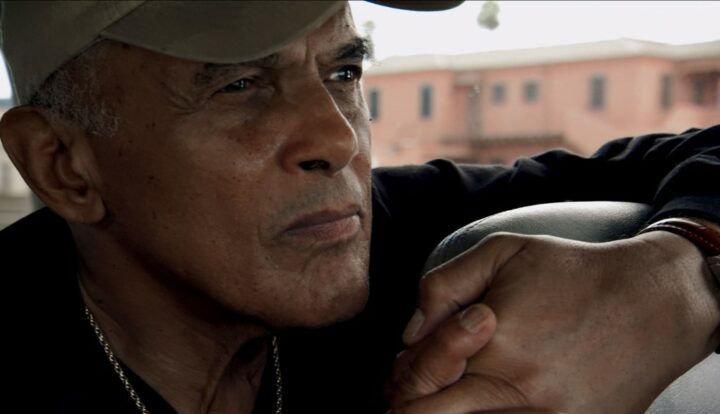
[When Maya Khankhoje was a teenager she had a crush on Belafonte, the singer of Calypso music. Now 50 odd years down the road, she has come to appreciate Belafonte, the man of integrity.]
****

Still from Carbon for Water. USA, 2011
Carbon for Water. USA, 2011.
UPDATE: Awarded BEST DOCUMENTARY SHORT
Maya Khankhoje
Climate change causes draught which leads to deforestation which in turn causes draught. Contaminated water kills, so does lack of water. What happens when you have to chop up wood to make fuel to boil water so that it doesn’t kill you? You can cause deforestation thereby compounding the problem. The answer lies in the use of water filters. How do you pay for these filters? By exchanging them for carbon credits in another part of the world. The company that came up with this solution says it’s a win-win situation. Perhaps — in the short term. In the long term carbon offsets are not the answer to the planet’s carbon emissions crisis which causes climate change which leads to deforestation… . This is a short-sighted solution offered by an economic system that suffers from congenital myopia. West Kenyan children, especially girl-children, are the front-line victims of the situation depicted in this 22-minute documentary since they are the ones who gather wood and ferry it back to distant villages exposing themselves to hazards (rape, wild life, dangerous rivers) and ill health (deformed spinal columns). On the other hand, clean water for the whole community is most welcome, pourvu que ça dure!
Montreal, 24 September 2012.
[Maya Khankhoje is not a pessimist but is critical of facile solutions that don’t envisage structural change.]
****
Hotel Haiti, Germany, 2011.
Maya Khankhoje
Imagine a 19th century ginger-bread house perched on top of a mountain with a view of tropical gardens and the sea beyond. Imagine writers like Graham Greene and his peers going there year after year to write seminal books like The Comedians. Imagine one of those regulars, American writer Herbert Gold, ninety years old at present, paying a nostalgic visit to that hotel for the first time since the devastating earthquake of 2010. Accompany him on his visits to old cronies, art galleries, voodoo priests, bars, cité du soleil. Imagine Martha Graham in her lovely home (alas it collapsed with the earthquake) teaching her young charges how to combine ballet with African dance. Imagine painters of all stripes, naïve and otherwise, documenting the terrible years of Papa Doc’s dictatorship and the short-lived hope inspired by Baby Doc. Just imagine. You get the picture. The result is a delightful foray into the past of this suffering country, a glimpse of its vivacious culture and a deeper understanding of what makes Haitians so resilient. Perhaps Haitians are like Hotel Olofsson, the present incarnation of this mansion. The structure did not collapse because, being built mainly of wood, it bent with the hurricane and then snapped back into place. Unfortunately this reviewer could not find an online picture to illustrate this brief review, but you can you-tube the name and watch a teaser of the movie. And of course, do watch the film when it comes out commercially. It will remind you of the reasons why the descendents of the founders of the very first Black Republic in the world are our brothers and sisters and why we have to stand by them and share their burden.
Montreal, 24 September 2012.
[Several years before the earthquake, Maya Khankhoje stayed in a steel and concrete hotel in Port-au-Prince favored by UN peacekeepers. That hotel collapsed and had to be demolished.]
****
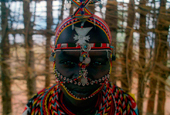
Umoja: No Men Allowed. Kenya/Australia, 2010
Umoja: No Men Allowed. Kenya/Australia, 2010
Maya Khankhoje
It only takes this documentary a few minutes out of its half an hour to make the point that women can be very powerful indeed when they are no longer under the rule of their men folk. In the 80’s and 90’s many Samburu tribal women in North Kenya reported being gang raped by British troops. The troops were not punished for “lack of sufficient evidence” (and could their skin colour and their status as former imperialists have anything to do with it?). However, the women were punished for the crime of being victimized and were banished from their homes by their husbands and male relatives. They almost starved until Rebecca, a women’s rights advocate, helped them regain their self-confidence, build a women’s only village called Umoja -unity in Kiswahili- , start cottage industries, and set up a co-ed school for their children. The men got furious and formed a rival hamlet trying to lure tourists away from them. When Australian filmmaker Elizabeth Tadic interviewed the men, they proudly asserted their manly right to “beat some sense into the women” who, the insisted, were to blame for getting raped. When Elizabeth asked the women what they did for sex, she got an incredulous look from one of them: “We, who have been victims of female circumcision, have lost our sense of pleasure. We only have sex to procreate.” Hopefully these men have learned the lesson that sexual pleasure can only be a mutual enterprise.
The film is as beautiful as the women and their colourful costumes. A warning, however, for the queasy: There are graphic scenes of goats getting slaughtered and of feasting on raw meat and blood. Those goats, however, got to live dignified lives in a natural setting. Not so cattle and poultry in the “civilized” West, who live in inhumane conditions and get slaughtered behind closed doors so that millions of “Macdos” can get consumed around the world without troubling anybody’s conscience.
Montreal, 23 September 2012.
[Maya Khankhoje is a vegetarian who realizes that survival on this planet is based on an exchange of lives, but that balance and a sense of proportion are equally important.]
****

Noir, Quebec, 2012
Noir, Quebec, 2012.
Maya Khankhoje
The protagonist of this ten-minute gem is a Montreal old-school cop who loves black-and-white films because he is a full Daltonian who can only see in black and white. He also has a passion for cinema noir and black humour. Noir delivers a strong message: beware of racial profiling because it can backfire. This poetic and esthetically pleasing film would be very funny were it not for the fact that racial profiling is a sad reality in la Belle Province.
Montreal, 23 September 2012.
****

Le Bonheur d’Elza. France/Guadeloupe, 2011.
Le Bonheur d’Elza. France/Guadeloupe, 2011.
Maya Khankhoje
Elza earns a master’s degree summa cum laude in Paris and is rewarded by her struggling single mother with a generous cheque. Against her mother’s advice, Elza uses it to buy herself a fare to Guadeloupe in search of her father, propelled by remote childhood memories. It turns out that dad is a successful businessman married to a white woman and not doing too well in the labour relations department. He is doing quite well, thank you, in the world of love affairs with his peers’ wives and the local working girls. Elza’s journey takes her through the intricate maze of class, gender and race in post-colonial paradise islands. When she finally reveals her presence to her father, the man haughtily replies: “You cannot be my daughter with such kinky hair!” In a post-screening chat, producer and actress Mariette Monpierre explains the promiscuity and lack of responsibility of many men in the islands as a product of slavery when male slaves were ferried around from plantation to plantation forming short-term attachments since the children ultimately became the master’s property. True, but that doesn’t explain away the prevalence of such paternal negligence throughout the world.
A beautifully crafted movie guaranteed to give you great bonheur.
Montreal, 22 September 2012.
****
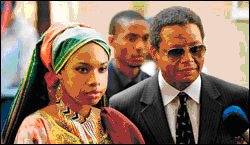
Winnie. Canada/South Africa, 2011.
Winnie. Canada/South Africa, 2011.
UPDATE: Awarded Honourable Mention for BEST NARRATIVE FEATURE
Maya Khankhoje
Winnie, a film depicting the life of Winnie Madikizela-Mandela, her relationship with her husband, Nelson Mandela and the African National Congress, is as controversial as its heroine. It was premiered at the Toronto International Film Festival in 2011 and its new incarnation was premiered in Quebec yesterday where the public received it very warmly. Why controversial? It apparently received a lukewarm welcome in Toronto so it was retrofitted to remove its flaws and bugs. Is the new version better? It is difficult to tell for those not having seen the original raw version. Another bone of contention was the casting. American actress and singer Jennifer Hudson plays the role of Winnie while Terence Howard, also an American actor and singer, incarnates Nelson. They are both Oscar nominees and great singers but South Africans would have preferred African actors to play the lead roles. So would we, the public.
So much for the cinematic side of the equation. Let us go on to the contents. It is very difficult to compress more than three decades in the life of a couple as well as one of the century’s most important social struggle into 107 minutes, but the effort is laudable. Winnie was affectionately called Mama Winnie for the hardships she endured during her husband’s 27-year incarceration and the manner in which she carried his banner aloft, but was later vilified for some choices she made, some very bad choices. Whether it was vanity that propelled her, a thirst for power or simple naivete is not clear. Or could the blame be laid on the sheer loneliness of exile and political harassment during which her only trustworthy companion was alcohol? Would she fit into the role of heroine which is the subject of this Montreal Serai issue or does she deserve to be repudiated for the tragic events that are imputed to her? Those who understand well the depth of suffering of the South Africans during this long struggle will certainly have an opinion. Those who are ignorant of history will learn enough to want to know even more. Go see the film and decide for yourself.
[Maya Khankhoje visited South Africa more than a decade ago. The film brought back fond memories of the beauty of the landscape, the sea and above all, the people.]
****

The 8th Montreal Black Film Festival, whose mission is to shed light on international Black realities, kicked off with a tribute to Harry Belafonte followed by the Quebec Premiere of Winnie, a biopic of Winnie Mandela. Harry Belafonte, singer, actor, UNICEF good-will ambassador and above all, civil rights activist, received the Festival’s 2012 HUMANITARIAN PRIZE for his contributions to the Civil Rights Movement in the United States and elsewhere. It is fitting that these two events were held jointly since Belafonte has “served” (in his own words) Winnie and Nelson Mandela in South Africa.
Harry Belafonte has also worked closely with Dr. Martin Luther King, Jr., as well as President John F. Kennedy. His mentor, as Belafonte is fond of remembering, was singer and activist Paul Robeson, from whom he learned that “artists are the gatekeepers of truth”.
In a press interview before the official opening of the Festival, Belafonte responded to a question raised by Montreal Serai:
Serai: “First of all, welcome to Montreal, Mr. Belafonte. I’m from Montreal Serai, a magazine whose mandate is to bring the margins to the centre. Since you have fought for the marginalized all your life, what advice would you give the young people of Quebec who have taken to the streets playing a different kind of music with pots and pans asking for easier access to higher education?”
Belafonte: A brief silence. Then a chuckle and a soft voice almost drowned by the audience’s laughter: “ I like that!” Belafonte then went on to explain that social movements have concentrated too much on the marginalized, the victims, the have-nots and that it was time to pay attention to what the people at the centre, the people in power, were saying and doing. It was also time to think in terms of society as a whole, the world in general, including the environment.
When Radio Canada asked him whether, if he were a young musician today, he would like to be like Beyonce or Pussy Riot, Belafonte, 85, quipped: “I am a young musician!”. He then went on to reject labels, reminding his audience that he has performed all types of music, although Caribbean music is what made him famous. He also derided the way “fat Blacks, thin Blacks, poor Blacks, rich Blacks” and so forth were categorized and analyzed. (Oprah anyone?!) He spoke about his friendship with Pierre Trudeau, thanked Canada for opening its arms to US citizens, to men who did not want to fight in an illegal war. “Is there a legal war” he added.
When someone asked what made him, an artist, become an activist, Belafonte laughed softly: “I was an activist who became an artist”. In response to another question, Belafonte denied having ever said that if Mitt Romney were elected it would be the end of the world. He then corrected himself: “I said it will damn well be almost the end of the world!” He also thanked the Republicans for giving people reasons to vote for Democrats.
Harry Belafonte, a thoughtful, soft-spoken but sharp-witted and pitch-perfect public speaker, warmed up the audience for 11 days of films about the Black experience.
Maya Khankhoje, Montreal, 19 September 2012.
